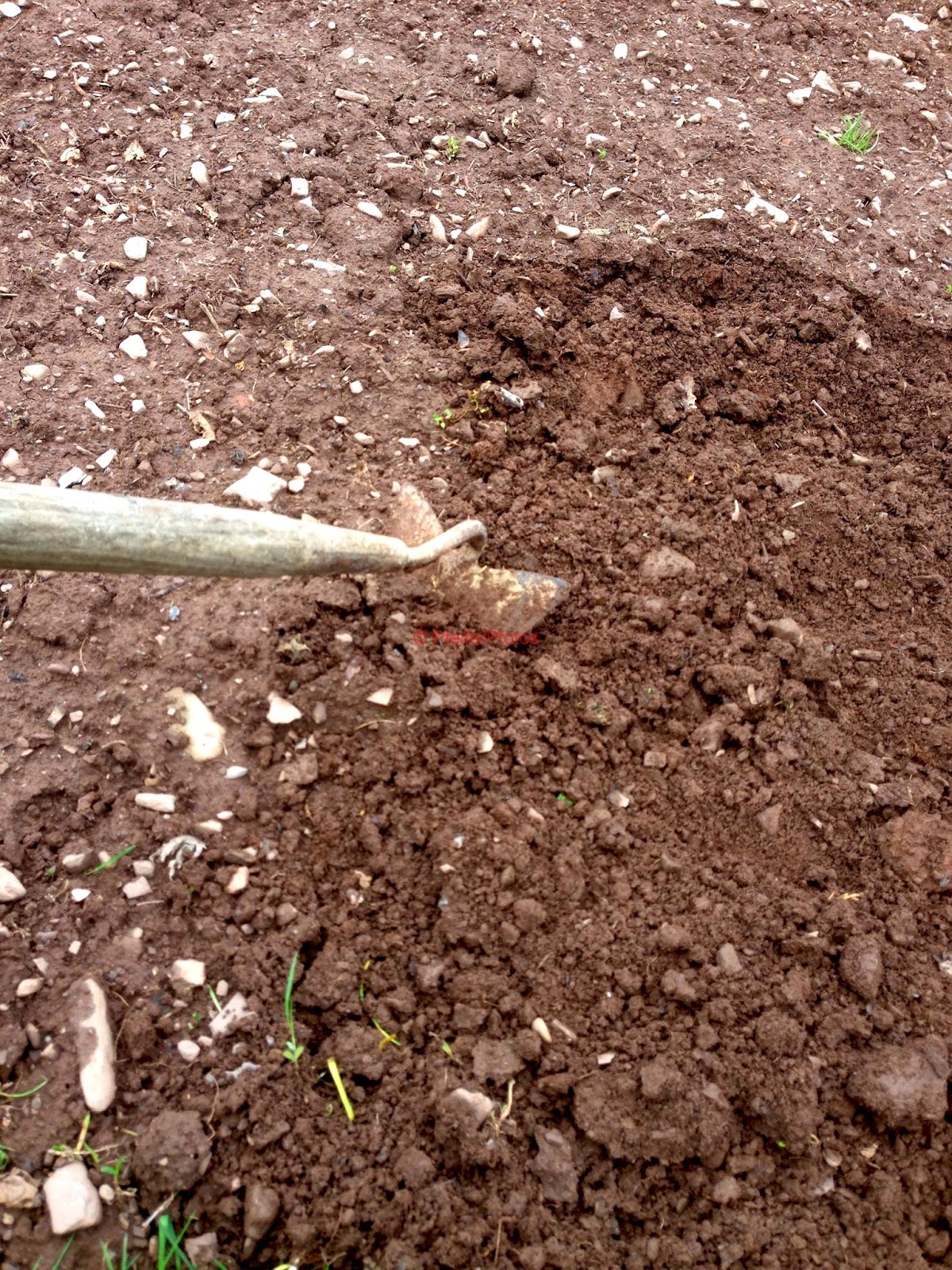Last week I planted potatoes. I love growing them and we usually end up with enough to last most of the winter. As a rule I try to pick varieties that store well.
In order to grow potatoes you will need quite a bit of garden space. I have expanded my gardens over the years so I have enough space. They are actually simple to grow. They do require some work initially, but it usually pays off quite nicely.
When growing potatoes, it is important that the soil is well cultivated, to allow the potatoes to grow and develop properly, If the soil is packed and hard, the result will be a poor crop. Good cultivation is important for all vegetables, however for potatoes it it especially helpful.
The first step is to make the rows. This is probably the hardest step when planting potatoes. I make trenches about 4 to 6 inches deep using a hoe. The spacing between the rows should be about 2 feet, more is even better if you have the garden space.
 |
| Potato Trench |
In my garden this year, I was able to make 5 rows, each about 25 feet long:
 |
| Potato Trenches |
The next step is to cut the potato sets into pieces so that there are at least 2 eyes per piece. For those who don't know, the potato eyes are where the sprouts emerge. Some of the eyes may already be sprouting, others are just barley visible. I usually can get at least 2 pieces per potato set, sometimes 3. If you end up with pieces with just one eye, simply plant 2 pieces for that hill.
 |
| Potato Set With Eyes (Sprouts) |
 |
| Potato Sets Cut Into Planing Pieces |
Now simply place the potato pieces in the trenches about 12 to 14 inches apart:
 |
| Planted Potatoes |
You will notice that in some case I use 2 or 3 pieces per hill. As I mentioned above, this is to ensure that there are 2 to 3 eyes per hill.
Finally, cover up the potatoes with only about 2 to 3 inches of soil. I don't completely fill in the trenches at this point to allow more moisture and warmth to reach them, which will allow them to sprout faster. Once the plants have sprouted and reach around 6 inches high, then I will build up more dirt around the plants. This technique is called "hilling" and will be covered in a future posts
 |
| Covering the potatoes |
This year I planted 2 varieties thus far. The first is Kennebec, a great all purpose mid season potato that stores well. It matures in about 80 days.
The second is Yukon Gold, which is also a good storage potato known for it's yellow flesh. This variety matures in about 70 to 90 days, and is great for baking, although it is very good also for boiling or potato salads.
Until next time. As always thanks for reading.








































